
This picture was exhibited at the same exhibition as “Gumno”. Her Venetsianov presented as a gift to the Emperor Alexander I. In those years – under the imperial patronage – the Gallery of Artistic Works of the Russian School was created in the Hermitage. “The morning of the landlord” was one of the first paintings that got into this collection.
In “Otechestvennye zapiski” for the appearance of new paintings by Venetsianov P. Svinin responded: “At last we waited for the artist,” he wrote, “who turned his beautiful talent to the image of one Russian, to the presentation of objects, his surroundings, close to his heart and to ours, and quite had time in this… “. It was in a certain sense an image, but Svinin hit it at the same time. Venetsianov really portrayed here “objects surrounding him,” to be exact, his own house in Safonkov.
A “landowner” wrote from his wife, intentionally darkening her face, to “lubricate” the similarity and not destroy the typicality of the genre scene. This “typification” forces art historians to compare the “Morning of the landowner” with the rural paintings of Pushkin’s “Eugene Onegin”. They talk about the common simplicity for two contemporary masters, about “capturing” the spirit of the era, about the effect of the “open window”.
Steady reception, used by the artist – building a perspective with the help of floorboards. The perspective for Venetsianov is a comprehensive concept; about it, he did not forget even when he wrote human heads. “Interioriness” is one of the most important features of many Venetian paintings.
The “Morning of the landlady” is no exception. The author lovingly reproduces the mahogany furniture typical for the 1820s. Palette Venetsianova sometimes seems monotonous, but in this work, its color is striking. Consistently building a color gamut on the contrast of red-brown and green tones, he as if on show demonstrates his coloristic skills.
 Gumno by Alexei Venetsianov
Gumno by Alexei Venetsianov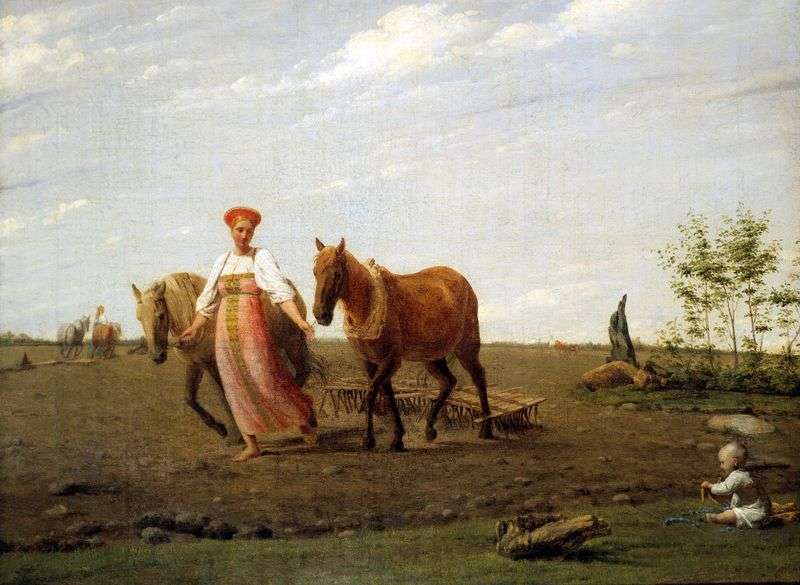 On the plowed field. Spring by Alexei Venetsianov
On the plowed field. Spring by Alexei Venetsianov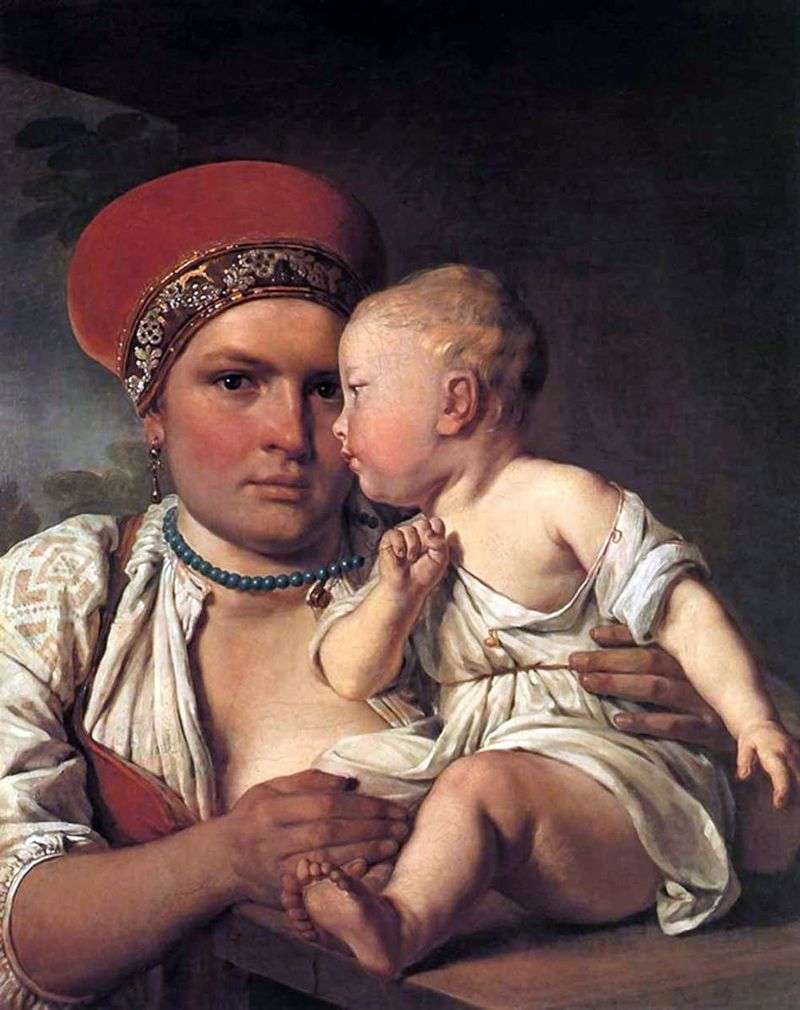 Nurse with a child by Alexei Venetsianov
Nurse with a child by Alexei Venetsianov Sleeping shepherdess by Alexei Venetsianov
Sleeping shepherdess by Alexei Venetsianov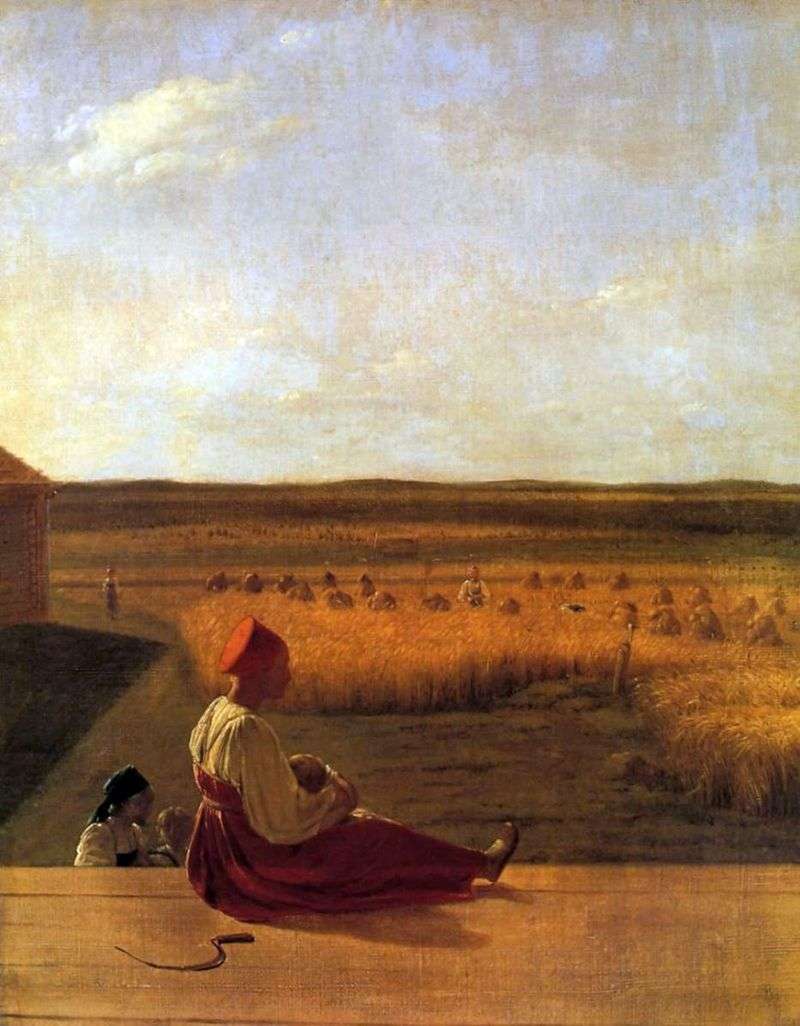 In the harvest. Summer by Alexei Venetsianov
In the harvest. Summer by Alexei Venetsianov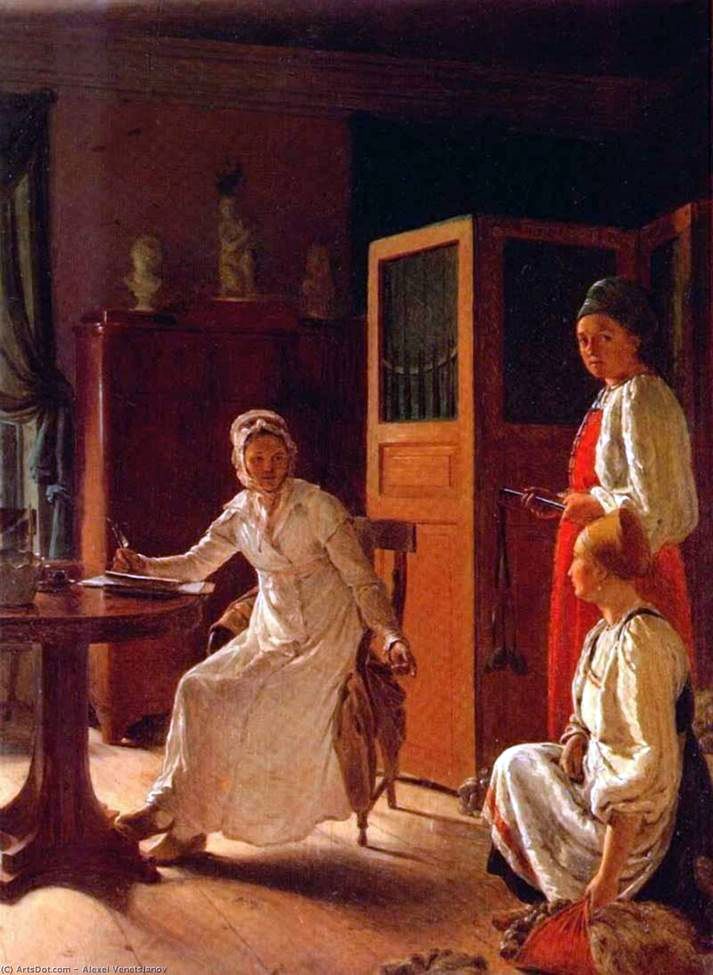 Matin du propriétaire – Alexey Venetsianov
Matin du propriétaire – Alexey Venetsianov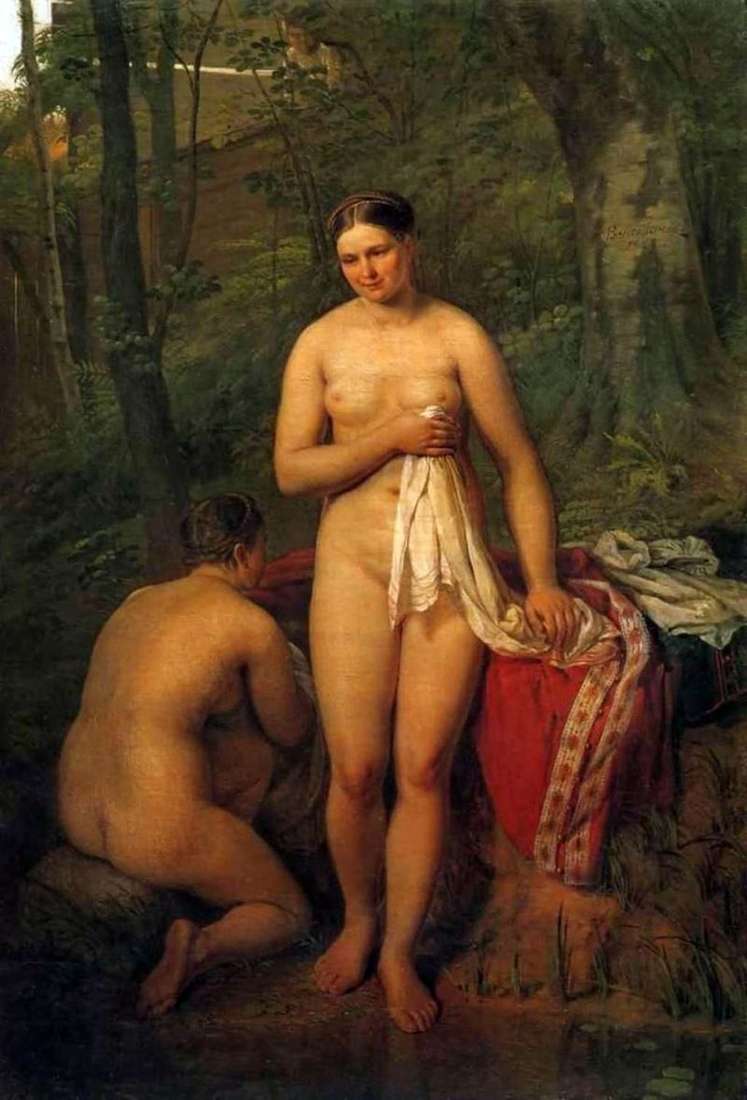 Bathers by Alexei Venetsianov
Bathers by Alexei Venetsianov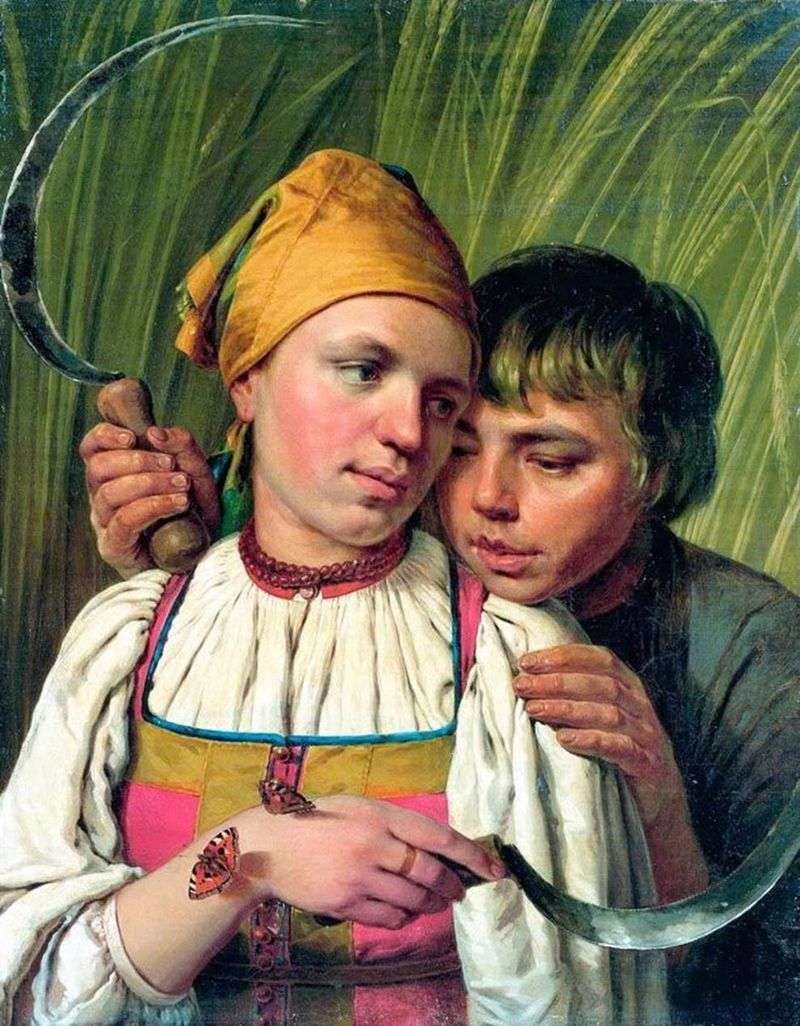 Reapers by Alexei Venetsianov
Reapers by Alexei Venetsianov